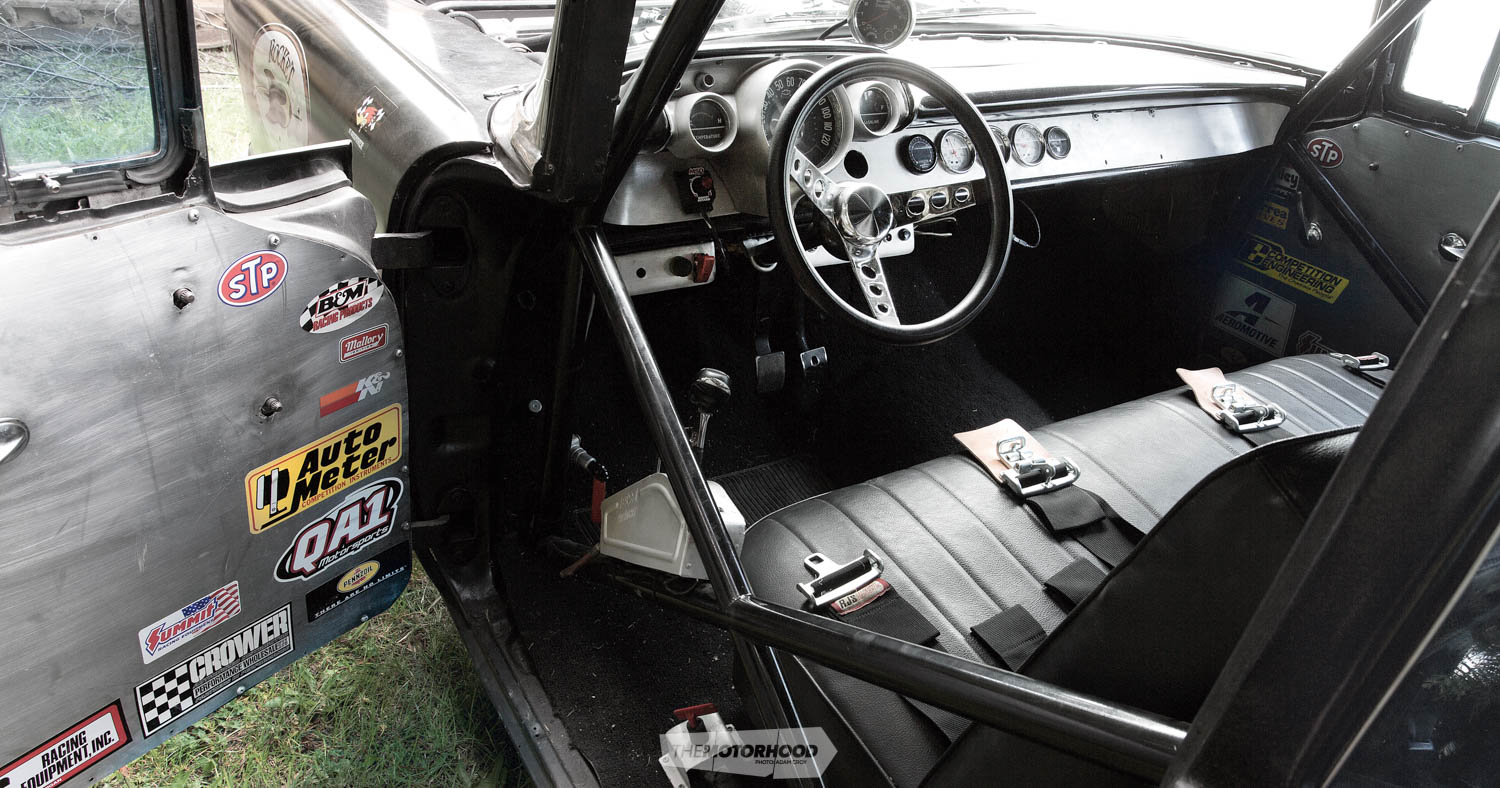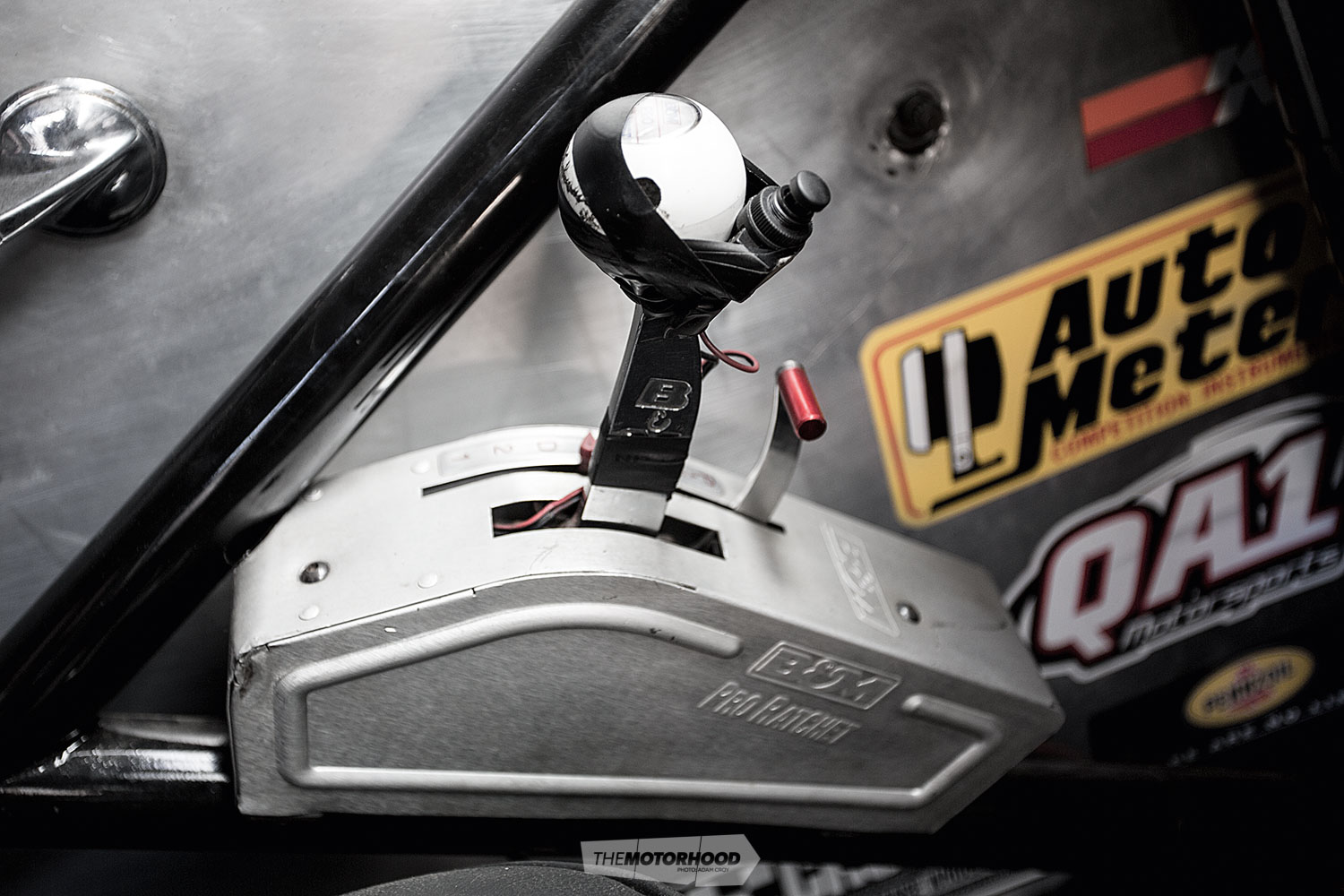It may look like an old race car, but Jason Harrison’s ’57 Chev has the power of a new one — and more
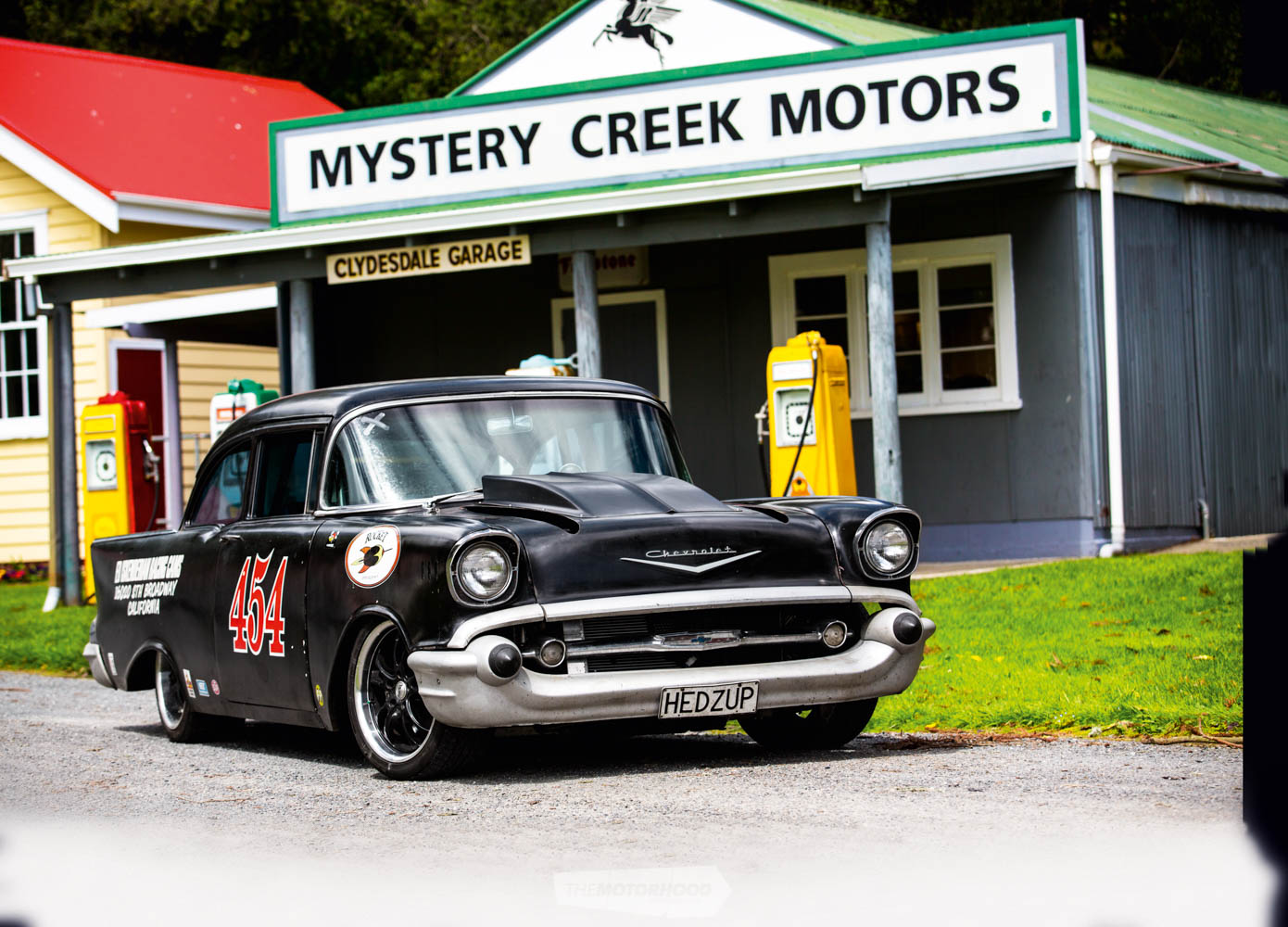
Over the last few years, the retro scene has taken off, with plenty of cars being built to replicate those of old — more often than not, race cars of old. This car is not one of them. Sure, the paint is faded and scratched, and it wears old-style race graphics. But there’s a difference: Jason Harrison’s ’57 Chev actually is an old race car from back in the day. Better still, it was owned and driven by well-known Wellington driver Robin Silk.
While the car started life as a four-door, somewhere along the way it was converted to a two-door — before it saw plenty of runs on the drag strip. By the time Jason got his hands on it — some 10 years ago — the rear end had been tubbed, and the famous lime green the car wore when Silk owned it had been replaced with a coat of black. The paint job must have been as quick as the car: if you look closely enough, you’ll see the occasional glimpse of lime showing through.
Jason’s love of ’57s stems from his father, who had a couple of them and left one each to Jason and his brother upon his passing. Jason’s one was a four-door, and ended up being tubbed also, while his brother’s was, and still is, more of a mint, original car.
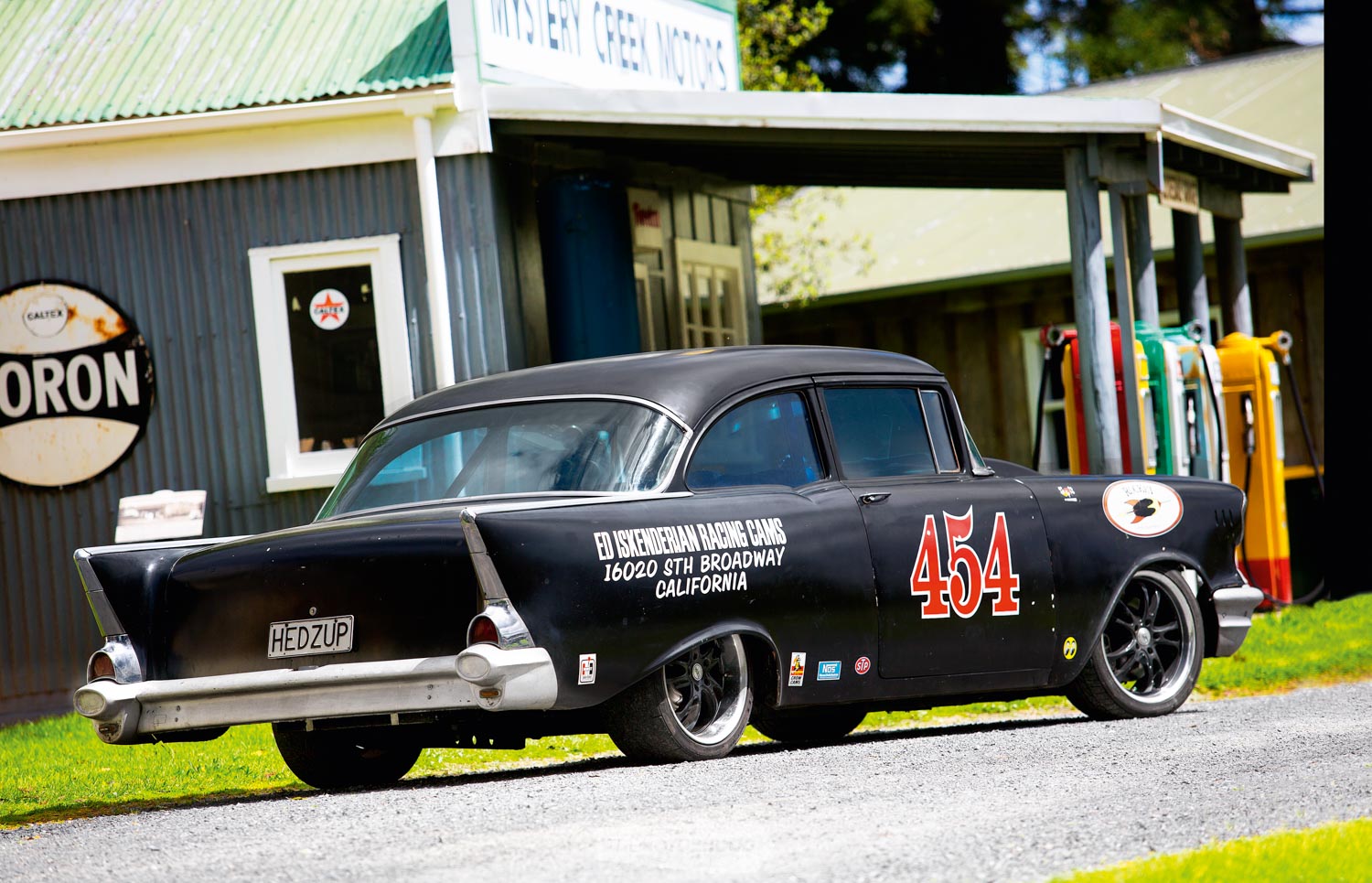
Wanting a two-door, Jason moved the inherited car on, and it wasn’t long before he found the car you see here. Over the years, Jason has dabbled with many different engine combinations — the one thing they’ve all had in common is that they’ve all been big blocks. That was until 2012, when Jason decided to throw together a budget twin-turbo small block so that he could learn about turbo set-ups and tuning them.
Having always wanted a twin-turbo big block with unfeasible amounts of power, he knew he was better to gain the knowledge before making the move; otherwise, if the real motor had any issues, it’d create a serious hole in his bank account. The small block, on the other hand, was thrown together for a minimal sum, and if it “grenaded”, it wouldn’t have been an issue.
Through plenty of research, though, the motor held together until Jason could settle on the parts list for the real deal and start assembling it. A 509ci Merlin crate motor from a race boat was purchased after it had run a bearing and scoured the crank. While the crank and rods were junk, the motor was just the thing Jason was after, as he intended building it to handle some serious boost. A set of JE pistons was ordered, along with Scat H-beam rods and a forged crank to drop compression and raise capacity up to 520ci. The Grumpy Jenkins rectangle port heads were kept stock, but the addition of a C&S Specialties blow-through carb was a good sign of what was to come, as was the water/methanol injection kit.
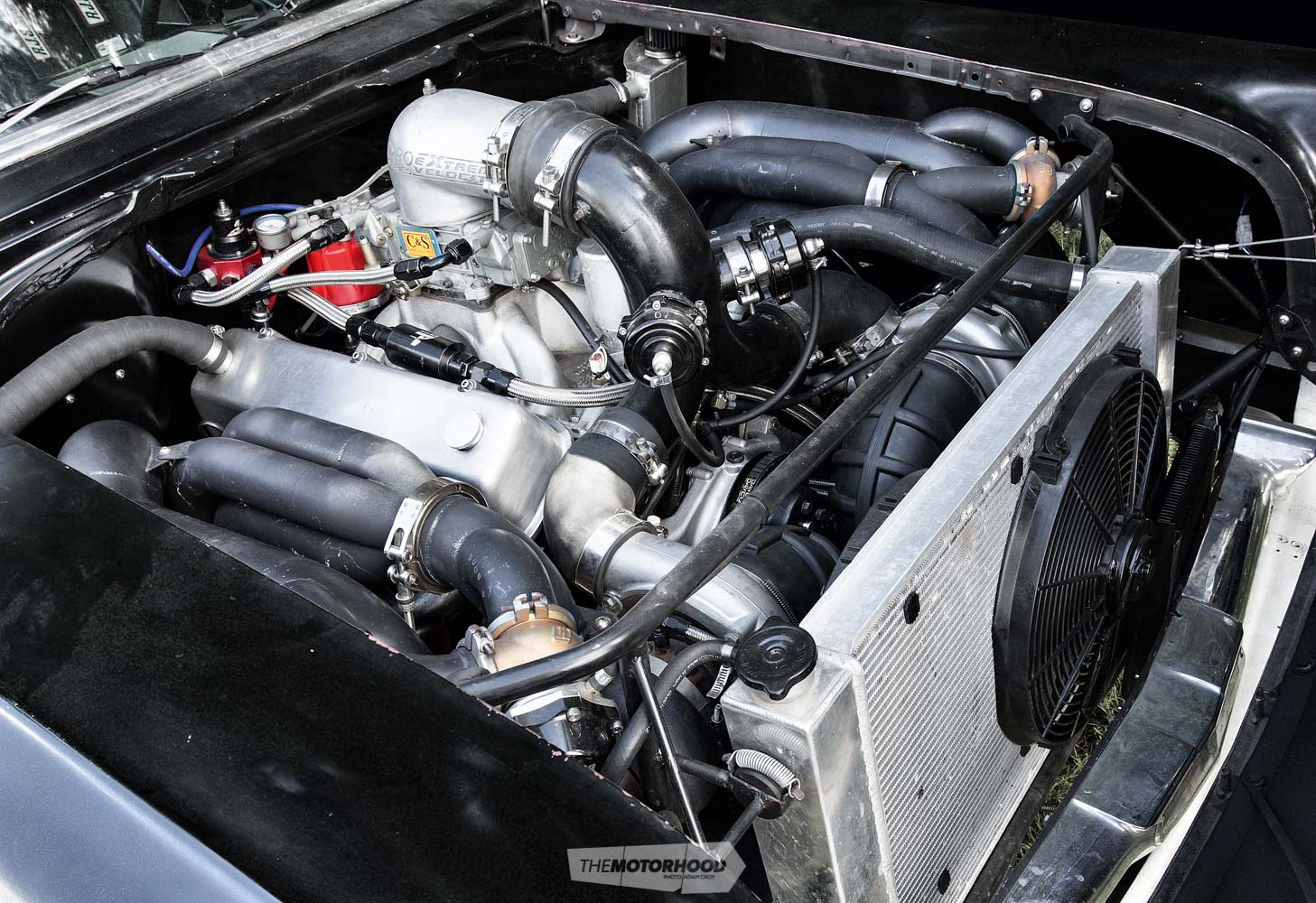
To fit the associated pipework to mount the twin 72mm Master Power turbos, and ensure the car would handle the power produced, the front of the chassis was replaced from the firewall forward. This allowed plenty of room for the massive exhausts to weave their way under the car and, in theory, would also allow cold air to get around everything.
At the same time, the firewall was knocked back a bit, as was the engine, and the firewall created around the new roll-cage bars that help to hold the new front end in place. The new cage extends inside the car, replacing the original from years gone by.
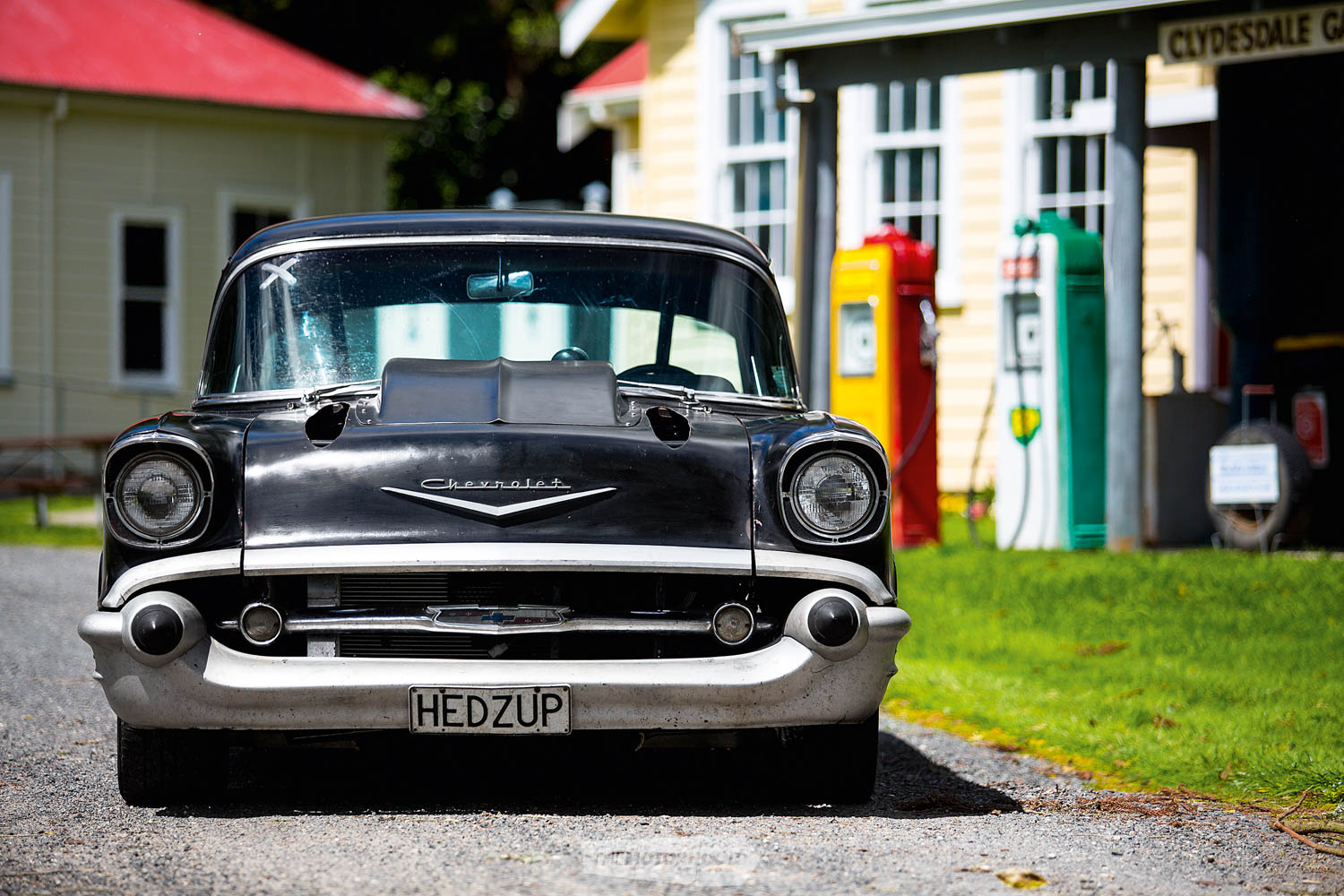
While most people with a set-up like this under the hood would try to have it as shiny as possible, Jason wanted the opposite. He tried to downplay the look of it, painting as much as he could matte black, and using black rubber air intakes as opposed to shiny silver. The de-shining was actually more difficult than it would have been to make it all stand out — go figure!
The reason for this move was to keep the style of the car intact, and we’re sure you’ll agree it was the right decision. In saying that, though, there’s little chance of hiding two massive turbos, matching wastegates, and blow-off valves …
Backing up the monster motor is a TH400 trans with manual valve body and 3000rpm stall converter, while further back is a nine-inch diff with Moser 35 spline axles and a Detroit Locker. To fit the drag slicks the car has worn for many years, the rear leaves have been moved inboard and are aided by Ansen traction bars.
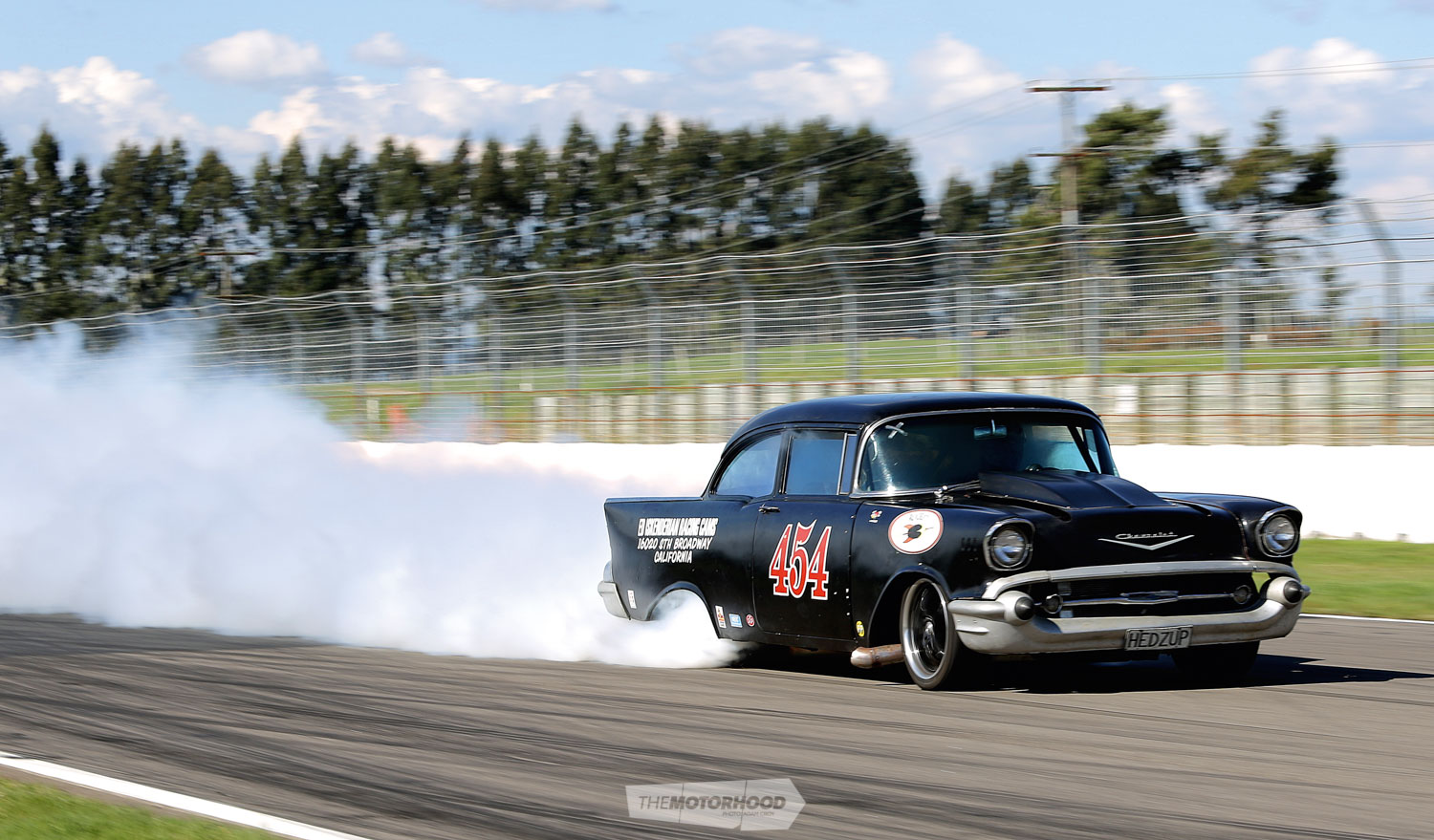
With the new front chassis clip came a C4 Corvette front suspension set-up, which massively changed not only the car’s handling but also the braking performance. Complete with the Corvette discs, calipers, and electric power-steer rack, the car now handles better than ever, according to Jason, and, although it feels wrong chucking it hard into tight corners, the car simply eats them up.
The 18×8-inch and 18×9.5-inch wheels that the car wears in these photos are just a set of old junkers fitted for track days, thanks in part to the old race slicks that Jason can get free to fit them. Strangely, despite being very Japanese looking, the rims actually kinda suit the rest of the look — the minimal tread on the rears being due to some massive power skids that just days before our shoot saw them turning for the length of Taupo Motorsport Park’s long main straight.
As yet, the car hasn’t hit the drag strip in its new guise, but, after it ran quick in the low 11s naturally aspirated, Jason’s hoping the car will run somewhere in the eight-second zone. While that’s a big call, the car’s making plenty of power, and, with a simple increase of the boost, will make even more. If you’re lucky enough to see it roll into the staging lanes at the strip, don’t be fooled into thinking it’s just another street car painted up to look old, as you’d be wrong on both accounts: it truly is an old race car, and the performance is anything but old.

Name: Jason Harrison
Age: 37
Occupation: Heavy machinery sales
Previously Owned Cars: SLR Torana, big block Camaro, ’57 Chev four-door, XC Falcon, V8 Commodore, Model A Roadster
Dream Car: Too many to list
Why the ’57 Chev? I was always keen to see how a twin-turbo big block would go
Build Time: Ongoing
Length of Ownership: 10 years
Jason thanks: Regal Automotive, Rocket Speed Equipment

1957 Chev
Engine: 520ci big block Chev, Merlin block, JE pistons, Scat H-beam rods, ARP fasteners, Grumpy Jenkins rectangle port heads, C&S Specialties blow-through 900cfm carb, twin Master Power 72mm turbos, Aeromotive mechanical fuel pump, Aeromotive regulator, MSD ignition, 3.5-inch twin exhausts, alloy radiator, twin electric fans, water/meth injection
Driveline: TH400 transmission, shift kit, manual valve body, 3000rpm stall converter, nine-inch diff, Moser 35 spline axles, Detroit locker
Suspension: C4 Corvette front end, alloy A-arms, QA1 coilovers, leaf rear, Ansen traction bars
Brakes: Wilwood pedal, C4 Corvette discs and calipers, Ford drums
Wheels/Tyres: 18×8-inch and 18×9.5-inch wheels
Exterior: Fibreglass bumpers, custom graphics
Interior: Custom roll cage, alloy dash panel, B&M Ratchet shifter, aftermarket gauges
Chassis: C4 Corvette front clip, custom rails, mini-tubbed rear
Performance: Untested








